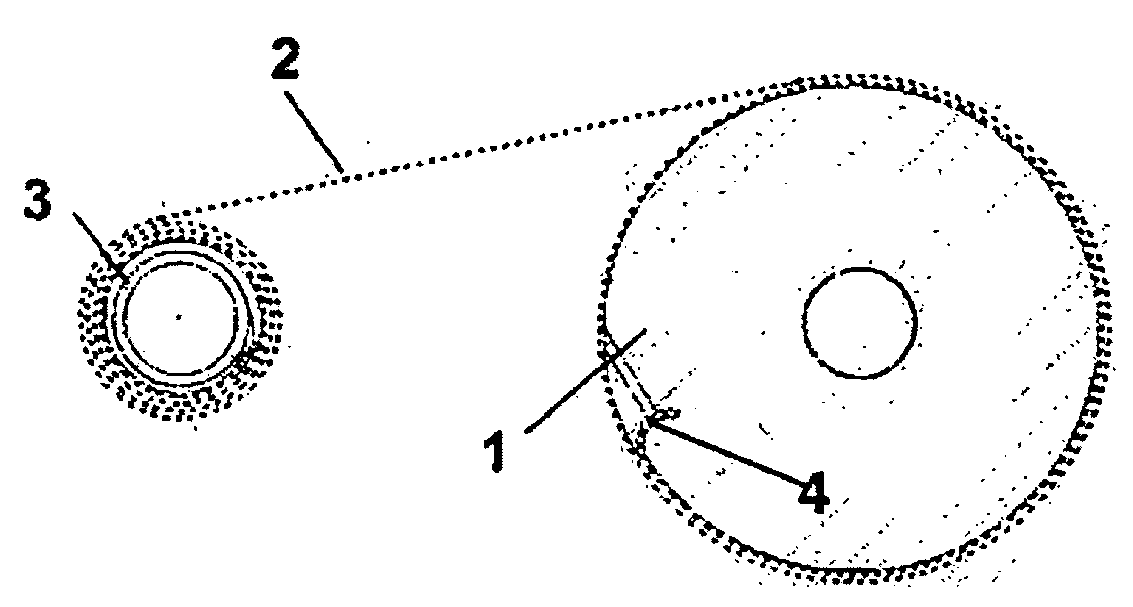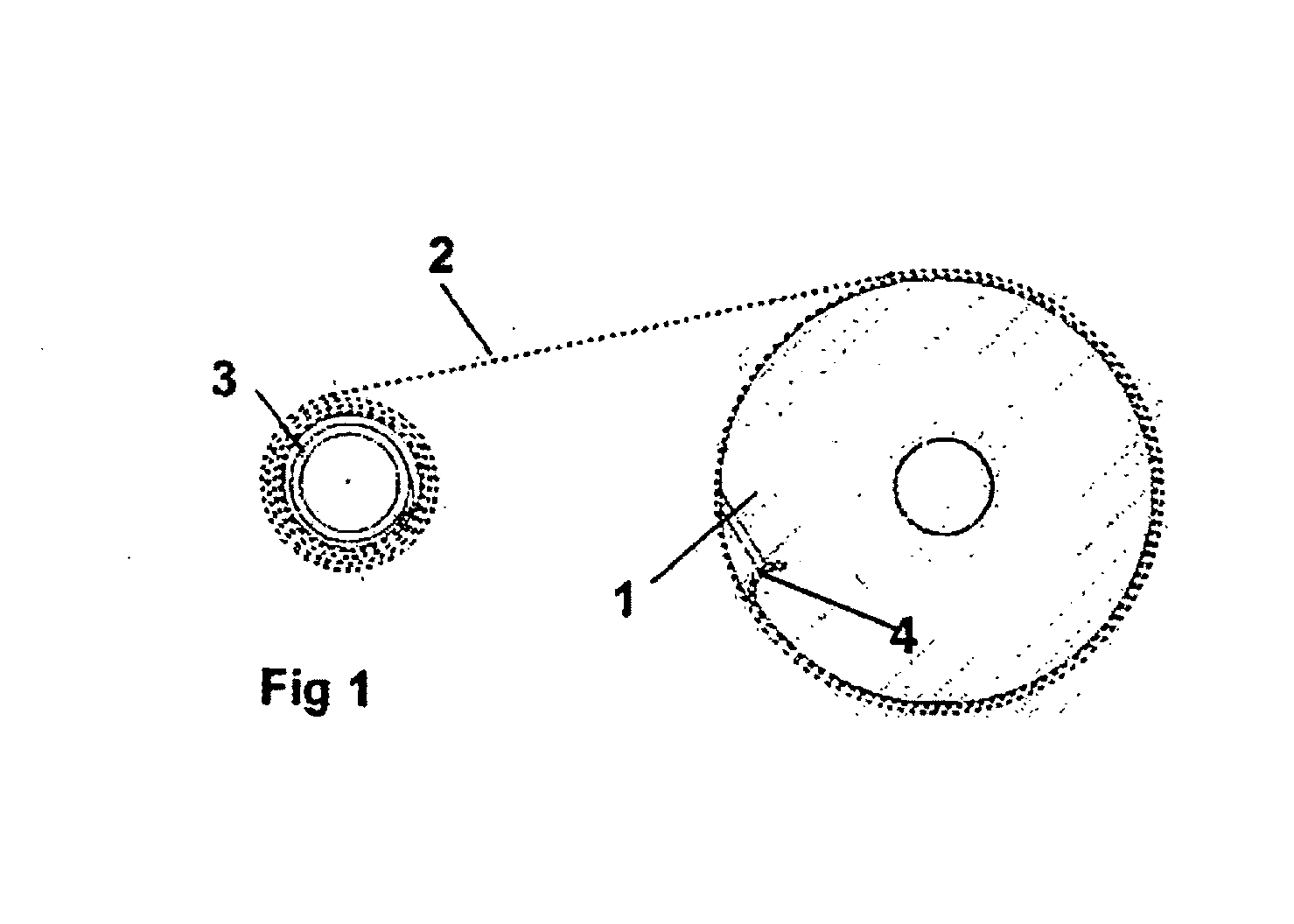Twisted Belt Transmission
a transmission and twisted belt technology, applied in the direction of belt/chain/gearing, friction gearing, belt/chain/gearing, etc., can solve the problems of reducing affecting the efficiency of the whole, and difficulty in specifying the toothing, so as to reduce the reduction ratio, increase the apparent radius of the driving pulley, and reduce the driving pulley. effect of radius
- Summary
- Abstract
- Description
- Claims
- Application Information
AI Technical Summary
Benefits of technology
Problems solved by technology
Method used
Image
Examples
Embodiment Construction
[0022]The driving pulley 1 rotates about the axis of the pedal crank mechanism and the driven pulley 3 about the axis of the rear wheel.
[0023]In the context of the application to the starting aid of a bicycle, the present system is normally used only in the phase of starting the bicycle. Thus, a coupling means intended either manually and / or automatically to select how the rear wheel of the bike is driven, namely either using the present transmission system or using the conventional transmission system employing a chain and rear sprocket(s) will advantageously also be provided. Whichever transmission is used, the driving force is applied to the driving pulley or to the front chain wheel, respectively, via the pedals.
[0024]In this variant, the pulleys 1 and 3 are preferably coplanar and the flexible element 2, which is a non-closed flat belt, is wound onto the pulley 1 while it is being unwound in the pulley 3, the two pulleys rotating in the clockwise direction. Because the pulleys ...
PUM
 Login to View More
Login to View More Abstract
Description
Claims
Application Information
 Login to View More
Login to View More - R&D
- Intellectual Property
- Life Sciences
- Materials
- Tech Scout
- Unparalleled Data Quality
- Higher Quality Content
- 60% Fewer Hallucinations
Browse by: Latest US Patents, China's latest patents, Technical Efficacy Thesaurus, Application Domain, Technology Topic, Popular Technical Reports.
© 2025 PatSnap. All rights reserved.Legal|Privacy policy|Modern Slavery Act Transparency Statement|Sitemap|About US| Contact US: help@patsnap.com


